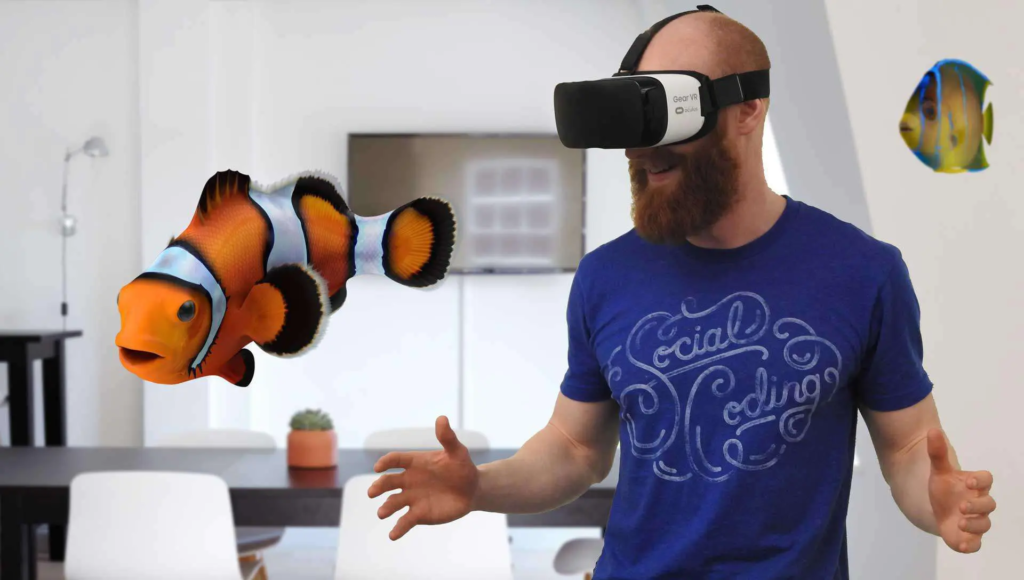
Augmented Reality (AR) and Virtual Reality (VR) are powerful technologies that are transforming the way we interact with the world around us. AR overlays digital information onto the real world, enriching our perception and interaction with our environment. On the other hand, VR immerses users in a fully digital environment, enabling them to explore and interact with virtual spaces and objects.
How AR (Augmented Reality) and VR (Virtual Reality) Work?

AR works by using devices like smartphones or AR glasses to overlay digital information – such as images, sounds, or GPS data – onto the user’s view of the real world. This is achieved through a combination of sensors, cameras, and computer vision technology.
Virtual Reality, on the other hand, utilizes specially designed headsets that completely replace the user’s field of view with a digital environment. Sophisticated VR systems may also include handheld controllers or body-tracking technology to provide more immersive interaction.
Applications of AR and VR

AR and VR have a wide range of applications across various sectors. In gaming, these technologies provide immersive experiences that are more engaging and interactive. In education, they offer unique learning opportunities, from virtual field trips to interactive 3D models. In healthcare, they’re used for everything from surgical training to patient therapy. In business, they’re transforming areas like product design, employee training, customer service, and marketing.
Challenges and Limitations of AR and VR
Despite the promise of AR and VR, these technologies also present challenges. Technical limitations, such as image quality and latency, can impact user experience. The high cost of advanced AR and VR systems can also be a barrier to adoption. Additionally, there are concerns about health effects, such as eye strain and motion sickness. Privacy and data security are other significant issues, given the amount of personal data these technologies can collect.
The Future of AR and VR
As technology continues to evolve, the future of AR and VR looks bright. Advances in artificial intelligence and 5G are set to enhance the capabilities and accessibility of these technologies. We can expect more realistic graphics, improved interactivity, and more affordable devices.
At the same time, new applications are likely to emerge, from social Virtual Reality platforms to AR-enhanced workplaces. As we navigate this exciting future, it’s important to address the challenges and ensure these technologies are used responsibly and ethically.
If you are way more into Virtual Reality and Augmented Reality, Here is Wikipedia VR.



